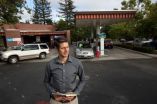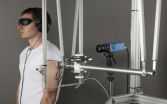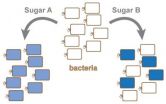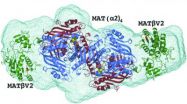(Press-News.org) LIVERMORE, Calif. — A study by researchers at Sandia National Laboratories concludes that a number of existing gas stations in California can safely store and dispense hydrogen, suggesting a broader network of hydrogen fueling stations may be within reach.
The report examined 70 commercial gasoline stations in the state of California and sought to determine which, if any, could integrate hydrogen fuel, based on the National Fire Protection Association (NFPA) hydrogen technologies code published in 2011.
The study determined that 14 of the 70 gas stations involved in the study could readily accept hydrogen fuel and that 17 more possibly could accept hydrogen with property expansions. Under previous NFPA code requirements from 2005, none of the existing gasoline stations could readily accept hydrogen.
The current code, known as NFPA 2, provides fundamental safeguards for the generation, installation, storage, piping, use and handling of hydrogen in compressed gas or cryogenic (low temperature) liquid form.
This work is aligned with Hydrogen Fueling Infrastructure Research and Station Technology (H2FIRST), a new project established by the Department of Energy's Office of Energy Efficiency and Renewable Energy.
Science, risk-informed analysis can accelerate H2 station deployment
The development of meaningful, science-based fire codes and determinations such as those found in the report will help accelerate the deployment of hydrogen systems, said Daniel Dedrick, hydrogen program manager at Sandia. "This work shows that we can reduce uncertainty and avoid overly conservative restrictions to commercial hydrogen fuel installations by focusing on scientific, risk-informed approaches.
"It turns out that the number of fueling stations able to carry hydrogen can be quantified," Dedrick added. "We now know that we can build more hydrogen fueling stations if we examine the safety issues within a sound, technical framework that focuses on the real behaviors of hydrogen."
Sandia's hydrogen safety, codes and standards program is a diverse portfolio of activities funded by the Department of Energy's Fuel Cell Technologies Office to provide the technical basis for developing and revising safety codes and standards for hydrogen infrastructure, including the NFPA 2 code.
The study focuses on California, which has more hydrogen-fueling stations than any other state. A key factor in the codes that Sandia examined was the separation distances required for fueling infrastructure, including fuel dispensers, air intakes and tanks and storage equipment. The code defines required distances between such components and public streets, parking, on-site convenience stores and perimeter lines around the site.
All fueling facilities are susceptible to fire due to the presence of flammable liquids and gases, said Dedrick. According to the NFPA, more than 5,000 fires and explosions a year occurred at conventional gasoline stations from 2004-2008. "Whether you are filling your car with gasoline, compressed natural gas or hydrogen fuel, the fueling facility first of all must be designed and operated with safety in mind," he said.
"If you have a hydrogen leak at a fueling station, for example, and in the event that the hydrogen ignites, we need to understand how that flame is going to behave in order to maintain and control it within a typical fueling station," explained Chris San Marchi, manager of Sandia's hydrogen and metallurgy science group. A scientific understanding of how such flames and other potential hazards behave is necessary to properly determine and mitigate safety risks, he said.
"We're comfortable with the risks of natural gas in our homes and under our streets," San Marchi pointed out. "We want to be just as confident of the safety of hydrogen in our fuel tanks and on our street corners."
Sandia researchers at the Combustion Research Facility for years have studied and modeled the intricate workings of the combustion engine and, more recently, hydrogen behavior and its effects on materials and engine components, San Marchi said. The knowledge gained by Sandia's work on the physical behavior of hydrogen and risks associated with hydrogen fuels provided the scientific basis to revise the separation distances in the NFPA 2 code for hydrogen installations.
H2 fueling stations can be as safe as or safer than gasoline stations
Under the previous code, virtually no hydrogen fuel cell stations could be sited at existing stations. The reason, said San Marchi, is simple: Those codes were developed via an "expert opinion-based process" and not the risk-informed process developed by Sandia researchers and now used in the code. The previous code was developed for flammable gases in an industrial setting, which carries different risks compared to hydrogen fuel at a fueling station.
"The distances set forth in the code, therefore, were much larger than we now know they need to be," San Marchi said. The risk metric used to develop the new NFPA code, he added, was that the stations accepting hydrogen fuel needed to be proven as safe as or safer than gasoline-only stations.
Some gas stations still may not be able to accept hydrogen under the new code because gas station lot sizes vary greatly, and many smaller sites – particularly those in dense, urban areas – cannot be properly configured, he said.
"Certain smaller gas stations, especially those in cities, have unusual shapes that aren't going to accommodate the right separation distances," San Marchi said. For example, he said, the required distance between a high-pressure tank carrying hydrogen and the property boundary would be too great for a "skinny" station or a wedge-shaped lot. While larger lots naturally work better in the current environment, San Marchi said, there are opportunities to develop risk mitigations that could allow even wider deployment of hydrogen fueling stations.
Enhancing performance-based parts of hydrogen code
One of Sandia's next objectives is to work with all parties to look closer at the underutilized performance-based parts of the NFPA 2 code, rather than the prescriptive-based elements that focus on rigid distance requirements.
"While the prescriptive sections of the code are typically implemented, there are also sections of the code that allow for the use of more risk analysis to optimize the fueling facility," San Marchi said. If station developers and others take a more performance-based approach, he said, more existing fueling facilities will be able to integrate hydrogen systems and support the developing fuel-cell electric vehicle market.
Sandia is also in the process of developing a risk-informed approach for shortening the separation distances for liquid hydrogen storage at fueling stations, as current efforts only examined separation distances for gaseous hydrogen. Liquid hydrogen is attractive because it takes up less space than gaseous hydrogen and allows fueling stations to accommodate larger numbers of fuel-cell electric vehicles. However, there are additional issues associated with the low temperatures required for liquid systems installed on small properties.
"We need to do more experimental and modeling work to understand and evaluate the science and physics of liquid hydrogen," said San Marchi. "By evaluating the risks quantitatively, we believe we can shorten the separation distances required in the code for liquid hydrogen just as we did with gaseous hydrogen. That could then lead to even more fueling stations that can accept hydrogen and support the continued growth of the fuel-cell electric vehicle market."
INFORMATION:
Sandia National Laboratories is a multi-program laboratory operated by Sandia Corporation, a wholly owned subsidiary of Lockheed Martin Corp., for the U.S. Department of Energy's National Nuclear Security Administration. With main facilities in Albuquerque, N.M., and Livermore, Calif., Sandia has major R&D responsibilities in national security, energy and environmental technologies and economic competitiveness.
Sandia news media contact: Mike Janes, mejanes@sandia.gov, (925) 294-2447
More California gas stations can provide H2 than previously thought, Sandia study says
2014-07-08
ELSE PRESS RELEASES FROM THIS DATE:
Logging and burning cause the loss of 54 million tons of carbon a year in Amazonia
2014-07-08
A study conducted by scientists in Brazil and the United Kingdom has quantified the impact that selective logging, partial destruction by burning, and fragmentation resulting from the development of pastures and plantations have had on the Amazon rainforest. In combination, these factors could be removing nearly 54 million tons of carbon from the forest each year, introduced into the atmosphere as greenhouse gases. This total represents up to 40% of the carbon loss caused by deforestation in the region.
The study, which was conducted by 10 researchers from 11 institutions ...
Earthquakes explained? New research shows friction and fracture are closely related
2014-07-08
Overturning conventional wisdom stretching all the way to Leonardo da Vinci, new Hebrew University of Jerusalem research shows that how things break (fracture) and how things slide (friction) are closely interrelated. The breakthrough study marks an important advance in understanding friction and fracture, with implications for describing the mechanics that drive earthquakes.
Over 500 years ago, da Vinci described how rough blocks slide over one another, providing the basis for our understanding of friction to this day. The phenomenon of fracture was always considered ...
Contradictory findings about the effect of the full moon on sleep
2014-07-08
A Swiss research study conducted last year showed that the full moon affects sleep. The findings demonstrated that people average 20 minutes less sleep, take five minutes longer to fall asleep and experience 30 minutes more of REM sleep, during which most dreaming is believed to occur.
Different outcome
Numerous studies through the years have attempted to prove or disprove the hypothesis that lunar phases affect human sleep. But results have been hard to repeat. A group of researchers at the famed Max Planck Institute and elsewhere analyzed data from more than 1,000 ...
Collisions with robots -- without risk of injury
2014-07-08
Everybody has experienced this: You aren't careful for just one moment and suddenly you run into the edge of a table. At first, it hurts. A little later, a bruise starts to appear. What falls into the category of "nothing bad, but aggravating" in the case of a table, takes on a new dimension when the colliding partner is a robot, because such a collision can injure humans seriously. That is why these mechanical assistants usually still work behind protective barriers. Since some applications require humans and robots to work hand-in-hand, though, their cooperation has become ...
Preterm babies more likely to survive in larger newborn care units
2014-07-08
Premature newborns are 32% less likely to die if they are admitted to high volume neonatal units rather than low volume, according to new research.
The study, led by the University of Warwick and published in BMJ Open, analysed data from 165 neonatal units across the UK. It found babies born at less than 33 weeks gestation were 32% less likely to die if they were admitted to high volume units, compared to low volume.
For babies born at less than 27 weeks the effect was greater, with the odds of dying almost halved when they were admitted to high volume units, compared ...
New research finds working memory is the key to early academic achievement
2014-07-08
Working memory in children is linked strongly to reading and academic achievement, a new study from the University of Luxembourg and partner Universities from Brazil* has shown. Moreover, this finding holds true regardless of socio-economic status. This suggests that children with learning difficulties might benefit from teaching methods that prevent working memory overload. The study was published recently in the scientific journal "Frontiers in Psychology".
The study was conducted in Brazil on 106 children between 6 and 8 from a range of social backgrounds, with half ...
Sandalwood scent facilitates wound healing and skin regeneration
2014-07-08
Skin cells possess an olfactory receptor for sandalwood scent, as researchers at the Ruhr-Universität Bochum have discovered. Their data indicate that the cell proliferation increases and wound healing improves if those receptors are activated. This mechanism constitutes a possible starting point for new drugs and cosmetics. The team headed by Dr Daniela Busse and Prof Dr Dr Dr med habil Hanns Hatt from the Department for Cellphysiology published their report in the "Journal of Investigative Dermatology".
The nose is not the only place where olfactory receptors occur
Humans ...
Treatment-resistant hypertension requires proper diagnosis
2014-07-08
High blood pressure—also known as hypertension—is widespread, but treatment often fails. One in five people with hypertension does not respond to therapy. This is frequently due to inadequate diagnosis, as Franz Weber and Manfred Anlauf point out in the current issue of Deutsches Ärzteblatt International (Dtsch Arztebl Int 2014; 111: 425–31).
If a patient's blood pressure is not controlled by treatment, this can be due to a number of reasons. Often it is the medication the patient is on. Some patients may be taking other medicines – in addition to their antihypertensive ...
When faced with some sugars, bacteria can be picky eaters
2014-07-08
Researchers from North Carolina State University and the University of Minnesota have found for the first time that genetically identical strains of bacteria can respond very differently to the presence of sugars and other organic molecules in the environment, with some individual bacteria devouring the sugars and others ignoring it.
"This highlights the complexity of bacterial behaviors and their response to environmental conditions, and how much we still need to learn," says Dr. Chase Beisel, an assistant professor of chemical and biomolecular engineering at NC State ...
A possible pathway for inhibiting liver and colon cancer is found
2014-07-08
A group of scientists from Spain, the UK and the United States has revealed the structure of a protein complex involved in liver and colon cancers. Both of these types of cancer are of significant social and clinical relevance as in 2012 alone, liver cancer was responsible for the second highest mortality rate worldwide, with colon cancer appearing third in the list.
The international team from CIC bioGUNE, the University of Liverpool and the US research centre USC-UCLA has successfully unravelled the mechanism by which two proteins, MATα2 and MATβ, bind to ...




